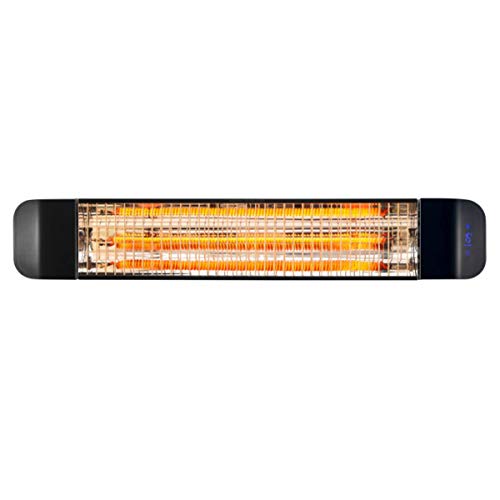How to Choose a Patio Heat Lamp Electric
You have many options when it comes to heating up your patio. Electric heaters are more efficient than propane models which require fuel refills. They can be heated in a matter of minutes by pressing a button, or flicking a switch.
They also don't emit gases that could cause health risks. Some offer adjustable heat settings for different distances.
Heater Type

With the right patio heater, you will be able to comfortably relax in your outdoor living spaces into the night and throughout the seasons. Patio heaters are available in many varieties including freestanding propane models, natural gas models as well as ceiling or wall mounted electric radiant heaters. Your choice will depend on the size of your space, the power sources available and personal preference.
The majority of patio heaters use electricity, liquid or natural gas to generate heat. They emit heat through convection heating as well as radiant heating. Their output of heat is measured in watts and can be converted to British thermal units (BTUs) for comparison. Certain models come with adjustable heat settings to give you more flexibility.
Patio heat lamps include a burner mounted on a pole, and an aperforated screen that reflects the flames and radiates heat downwards to warm objects, people and furniture. Some come with an reflector on top of the burner that can be silvered to cut down the amount of heat that is lost upwards.
The most common type of patio heater is a gas patio heater is typically found in outdoor seating areas of bars and restaurants since they generate lots of heat quickly and spread it evenly across all directions -- great to heat tables. These patio heaters can be portable and run from propane tanks or plumbed into your natural gas line with the latter providing greater convenience and lower initial installation costs, but also requiring an ongoing cost of fuel.
Gas patio heaters are becoming more popular as more houses have natural gas lines. They are simple to install, but they require a gas line that's properly installed and operating to be secure. Portable natural gas heaters are available with extension hoses that can help overcome this issue, however they could be a trip hazard and may pose an additional fire risk when not being used.
Safety
Most electric patio heaters are safe to use in covered areas since they allow heat to radiate outward instead of upwards toward things that ignite, like the roof. They are not intended to be used under a non-protected roof. The heater must be placed at least 6" away from the ceiling, or 18" away from the wall adjacent to prevent fire hazards.
Patio heaters made of propane and gas can only be used in enclosed areas that have durable covers made for outdoor use. They are usually constructed of fire-resistant fabrics and have a roof that can be closed. electric patio heater indoors of patio heaters have security concerns due to the flames and fumes they create. They should be kept away from objects that ignite, such as curtains and chairs.
Follow the safety and instructions guidelines of the manufacturer when installing a patio heater or patio heat lamp. Make sure you select the one with UL and CSA certifications, and read the owner's manual thoroughly. Make sure that the heater is not within reach of children and pets. Some free-standing patio heaters, such as EUROM, have a built-in tipping safeguard that automatically shuts off the device in the event that it falls over.
If your patio heater is connected to a natural gas line, you must examine it regularly and be sure to have it tested by a qualified professional for leaks. If the line has to be replaced, be certain to get an authorized plumber. A professional can determine if the line has been properly routed or should be run through an underground pipe. In addition, a professional can also ensure that the heater in the patio is plugged into an outlet that is GFCI (ground fault circuit interrupter) rated to protect against electrical fires and shocks.
Installation
The the height at which a patio heater is placed affects the amount of heat it will radiate into the space. The heater should be placed away from surfaces like plastic and wood that may deform. The heater can be mounted on a structure, wall or any other surface with standard mounting brackets. Certain models come with a soft start feature, which decreases the peak current to safeguard your circuits.
